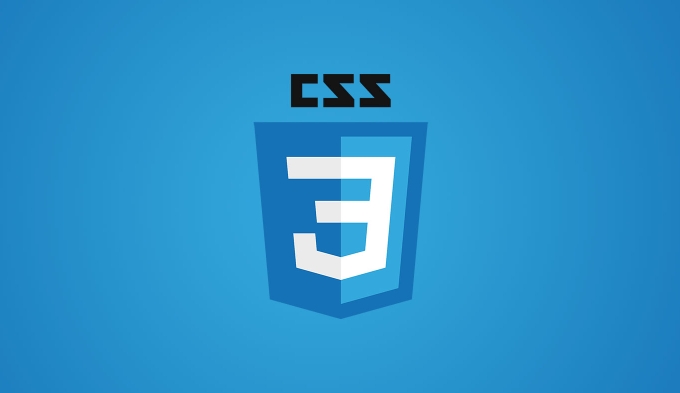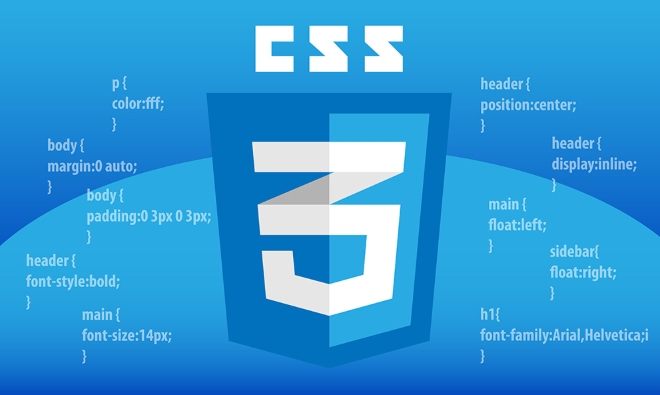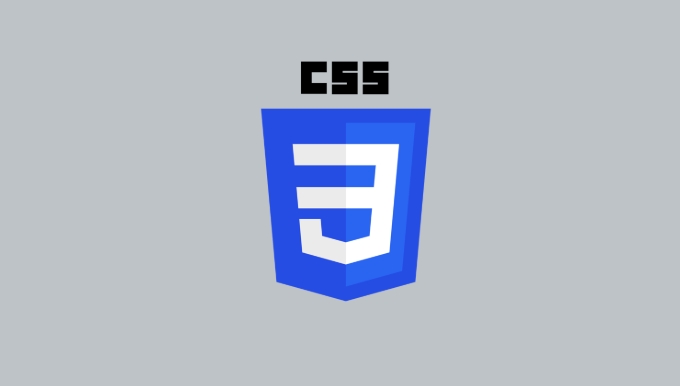CSS Grid is one of the most powerful tools for handling complex interface layouts. It supports a two-dimensional grid system that can control rows and columns at the same time. After defining the container with display: grid, set the row and column size through grid-template-columns and grid-template-rows, and 1fr represents a copy of the available space. Common techniques include: 1. Use repeat() to simplify the definition of repeated rows and columns; 2. Use minmax() to set the content adaptive range; 3. Use grid-template-areas to improve readability and simplify structural maintenance; 4. Use gap to set spacing uniformly; 5. Use auto-fit to realize responsive line wrap layout. By mastering these core points and practicing more, you can efficiently build a modern web interface.

To solve complex interface layouts, CSS Grid is one of the most powerful tools at present. Instead of dealing with only one-dimensional layouts like Flexbox, it truly supports a 2D grid system, allowing you to control both rows and columns at the same time. If you are still using floating or absolute positioning to form complex structures, it's really time to try Grid.

Understand the basic structure of Grid
The core of the Grid layout is to define a container as display: grid and then set the size of rows and columns. You can use grid-template-columns and grid-template-rows to define the dimensions of each row and each column. for example:

.container {
display: grid;
grid-template-columns: 1fr 2fr 1fr;
} The above code will create three columns, and the middle column is twice the width of the left and right columns. Understanding the fr unit (representing "fraction", a copy of the usable space) is a very critical step.
Common techniques include:

- Use the
repeat()function to simplify repeated column or row definitions, such asrepeat(3, 1fr)to represent three equal width columns. - Use
minmax()to set the minimum maximum value to automatically adapt to different screen sizes.
Improve readability with region naming
When building complex layouts, giving each area a name will make the code clearer and easier to maintain. Through grid-template-areas you can directly "draw" the layout structure:
.container {
display: grid;
grid-template-columns: 1fr 2fr 1fr;
grid-template-rows: auto 1fr auto;
grid-template-areas:
"header header header"
"nav main sidebar"
"footer footer footer";
} Then use grid-area in the child elements to specify which region they belong to:
.header {
grid-area: header;
}This method is particularly suitable for page-level layouts, such as dashboard and backend management system interfaces, which can see the structural relationship at a glance, and later modifications are more intuitive.
Control spacing and responsive adaptation
Two often overlooked but very practical properties are gap and auto-fit . gap can set the spacing between rows and columns uniformly without adding additional margins:
.container {
gap: 20px;
} In responsive design, combining minmax() and auto-fit can achieve a flexible layout of automatic line wrapping:
.container {
display: grid;
grid-template-columns: repeat(auto-fit, minmax(250px, 1fr));
}This writing allows the project to automatically adjust the number of columns according to the container width, such as from one row to two to one row and three, which is very suitable for card-type layout.
Basically that's it. By mastering these core points, you can use CSS Grid to build most complex modern web interfaces. What is not complicated but easy to ignore is: practice more nested use in actual scenarios and reasonably divide the area range, so that the power of Grid can be truly exerted.
The above is the detailed content of Mastering CSS Grid Layout for complex interfaces. For more information, please follow other related articles on the PHP Chinese website!

Hot AI Tools

Undress AI Tool
Undress images for free

Undresser.AI Undress
AI-powered app for creating realistic nude photos

AI Clothes Remover
Online AI tool for removing clothes from photos.

Clothoff.io
AI clothes remover

Video Face Swap
Swap faces in any video effortlessly with our completely free AI face swap tool!

Hot Article

Hot Tools

Notepad++7.3.1
Easy-to-use and free code editor

SublimeText3 Chinese version
Chinese version, very easy to use

Zend Studio 13.0.1
Powerful PHP integrated development environment

Dreamweaver CS6
Visual web development tools

SublimeText3 Mac version
God-level code editing software (SublimeText3)

Hot Topics
 What is 'render-blocking CSS'?
Jun 24, 2025 am 12:42 AM
What is 'render-blocking CSS'?
Jun 24, 2025 am 12:42 AM
CSS blocks page rendering because browsers view inline and external CSS as key resources by default, especially with imported stylesheets, header large amounts of inline CSS, and unoptimized media query styles. 1. Extract critical CSS and embed it into HTML; 2. Delay loading non-critical CSS through JavaScript; 3. Use media attributes to optimize loading such as print styles; 4. Compress and merge CSS to reduce requests. It is recommended to use tools to extract key CSS, combine rel="preload" asynchronous loading, and use media delayed loading reasonably to avoid excessive splitting and complex script control.
 External vs. Internal CSS: What's the Best Approach?
Jun 20, 2025 am 12:45 AM
External vs. Internal CSS: What's the Best Approach?
Jun 20, 2025 am 12:45 AM
ThebestapproachforCSSdependsontheproject'sspecificneeds.Forlargerprojects,externalCSSisbetterduetomaintainabilityandreusability;forsmallerprojectsorsingle-pageapplications,internalCSSmightbemoresuitable.It'scrucialtobalanceprojectsize,performanceneed
 Does my CSS must be on lower case?
Jun 19, 2025 am 12:29 AM
Does my CSS must be on lower case?
Jun 19, 2025 am 12:29 AM
No,CSSdoesnothavetobeinlowercase.However,usinglowercaseisrecommendedfor:1)Consistencyandreadability,2)Avoidingerrorsinrelatedtechnologies,3)Potentialperformancebenefits,and4)Improvedcollaborationwithinteams.
 CSS Case Sensitivity: Understanding What Matters
Jun 20, 2025 am 12:09 AM
CSS Case Sensitivity: Understanding What Matters
Jun 20, 2025 am 12:09 AM
CSSismostlycase-insensitive,butURLsandfontfamilynamesarecase-sensitive.1)Propertiesandvalueslikecolor:red;arenotcase-sensitive.2)URLsmustmatchtheserver'scase,e.g.,/images/Logo.png.3)Fontfamilynameslike'OpenSans'mustbeexact.
 What is Autoprefixer and how does it work?
Jul 02, 2025 am 01:15 AM
What is Autoprefixer and how does it work?
Jul 02, 2025 am 01:15 AM
Autoprefixer is a tool that automatically adds vendor prefixes to CSS attributes based on the target browser scope. 1. It solves the problem of manually maintaining prefixes with errors; 2. Work through the PostCSS plug-in form, parse CSS, analyze attributes that need to be prefixed, and generate code according to configuration; 3. The usage steps include installing plug-ins, setting browserslist, and enabling them in the build process; 4. Notes include not manually adding prefixes, keeping configuration updates, prefixes not all attributes, and it is recommended to use them with the preprocessor.
 What are CSS counters?
Jun 19, 2025 am 12:34 AM
What are CSS counters?
Jun 19, 2025 am 12:34 AM
CSScounterscanautomaticallynumbersectionsandlists.1)Usecounter-resettoinitialize,counter-incrementtoincrease,andcounter()orcounters()todisplayvalues.2)CombinewithJavaScriptfordynamiccontenttoensureaccurateupdates.
 CSS: When Does Case Matter (and When Doesn't)?
Jun 19, 2025 am 12:27 AM
CSS: When Does Case Matter (and When Doesn't)?
Jun 19, 2025 am 12:27 AM
In CSS, selector and attribute names are case-sensitive, while values, named colors, URLs, and custom attributes are case-sensitive. 1. The selector and attribute names are case-insensitive, such as background-color and background-Color are the same. 2. The hexadecimal color in the value is case-sensitive, but the named color is case-sensitive, such as red and Red is invalid. 3. URLs are case sensitive and may cause file loading problems. 4. Custom properties (variables) are case sensitive, and you need to pay attention to the consistency of case when using them.
 Case Sensitivity in CSS: Selectors, Properties, and Values Explained
Jun 19, 2025 am 12:38 AM
Case Sensitivity in CSS: Selectors, Properties, and Values Explained
Jun 19, 2025 am 12:38 AM
CSSselectorsandpropertynamesarecase-insensitive,whilevaluescanbecase-sensitivedependingoncontext.1)Selectorslike'div'and'DIV'areequivalent.2)Propertiessuchas'background-color'and'BACKGROUND-COLOR'aretreatedthesame.3)Valueslikecolornamesarecase-insens






